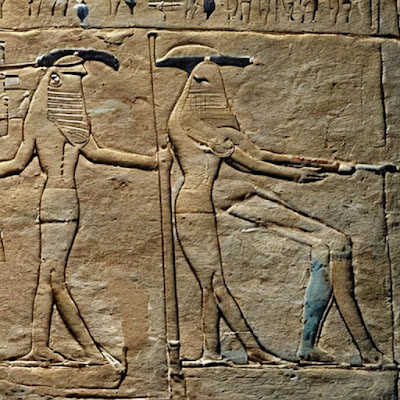Ramses II and the Battle of Kadesh A Turning Point in Ancient Warfare
Ramses II and the Battle of Kadesh A Turning Point in Ancient Warfare - Ramses II, also known as Ramses the Great, was the third pharaoh of the Nineteenth dynasty of Egypt, who reigned from 1279 to 1213 BC. He was one of Egypt's most powerful and influential rulers, credited with numerous building projects and military victories. One of his most famous battles was the Battle of Kadesh, which took place in 1274 BC against the Hittites, a powerful empire in ancient Anatolia (modern-day Turkey).
The Battle of Kadesh is considered a turning point in ancient warfare, as it marked the first recorded peace treaty in recorded history and changed the way wars were fought and diplomacy was conducted in the ancient world.
The Hittites and Egyptians had long been rivals, with both nations seeking to gain control over the rich trade routes in the eastern Mediterranean. The Battle of Kadesh was the culmination of years of tensions between the two nations and marked the first major conflict between them. The battle began when the Hittite king, Muwatalli II, sent a large army led by his son, Prince Hattusili, to capture the city of Kadesh, which was an important Egyptian stronghold in the region.
Ramses II, who was known for his military prowess, responded quickly to the Hittite invasion, leading a force of 20,000 men to the city to defend it. The battle that ensued was intense and lasted for several days, with both sides suffering heavy losses. Despite their best efforts, the Egyptians were unable to repel the Hittite army and the city of Kadesh was eventually captured.
However, Ramses II refused to accept defeat, and with the help of his allies, he managed to regroup and launch a counterattack. The Hittites, who were taken aback by the unexpected Egyptian counterattack, were forced to retreat, and Ramses was able to retake the city of Kadesh. The battle ended in a stalemate, with neither side gaining a clear victory, but the damage inflicted on both sides was significant.
The aftermath of the Battle of Kadesh was a turning point in ancient warfare. Despite the conflict, Ramses II and Muwatalli II realized that continued warfare between their two nations would only lead to further losses and destruction. They decided to put aside their differences and negotiate a peace treaty, which was signed in 1258 BC. This treaty marked the first recorded peace treaty in recorded history and set the stage for a period of relative peace between the Egyptians and Hittites that lasted for over a century.
The Battle of Kadesh also changed the way wars were fought in the ancient world. The conflict was the first recorded use of chariots in battle and marked a shift away from traditional hand-to-hand combat. The use of chariots allowed armies to cover more ground and carry out more sophisticated maneuvers, making it easier to wage war and control territories.
In conclusion, the Battle of Kadesh was a major event in the history of ancient warfare, marking a turning point in the way wars were fought and diplomacy was conducted. Ramses II and Muwatalli II's decision to negotiate a peace treaty set a precedent for future generations and helped establish a period of relative peace between their two nations. The Battle of Kadesh also demonstrated the importance of military strategy and the use of chariots in ancient warfare, which would become central to the way wars were fought for centuries to come.


Comments
Post a Comment